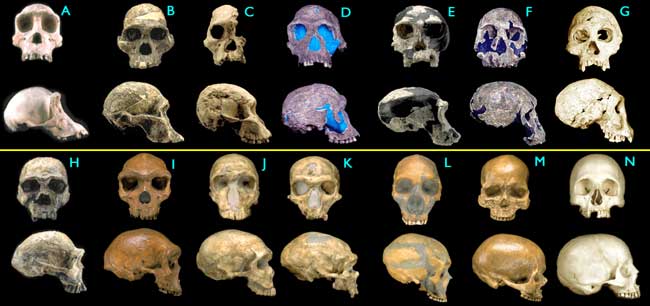To: Dataman
To: VadeRetro
- "Contrary to what most scientists write, the fossil record does not support the Darwinian theory of evolution because it is this theory (there are several) which we use to interpret the fossil record. By doing so, we are guilty of circular reasoning if we then say the fossil record supports this theory." [Ronald R. West (evolutionist), "Paleontology and Uniformitariansim." Compass, Vol. 45 (May 1968), p. 216.]
- "Established species are evolving so slowly that major transitions between genera and higher taxa must be occurring within small rapidly evolving populations that leave NO LEGIBLE FOSSIL RECORD." [Steven M. Stanley, Macroevolution and the Fossil Record, Vol. 36, No. 3, 1986, p. 460. (emphasis added)]
- "The known fossil record fails to document a single example of phyletic evolution accomplishing a major morphologic transition and hence offers no evidence that a gradualistic model can be valid." [Steven M. Stanley, Macroevolution: Pattern and Process. San Francisco: W. M. Freeman & Co., 1979, p. 39.]
- "...Every paleontologist knows that most new species, genera, and families, and that nearly all categories above the level of family appear in the record suddenly and are not led up to by known, gradual, completely continuous transitional sequences." [George Gaylord Simpson (evolutionist), The Major Features of Evolution, New York, Columbia University Press, 1953 p. 360.]
- "Few paleontologists have, I think, ever supposed that fossils, by themselves, provide grounds for the conclusion that evolution has occurred. The fossil record doesn’t even provide any evidence in support of Darwinian theory except in the weak sense that the fossil record is compatible with it, just as it is compatible with other evolutionary theories, and revolutionary theories, and special creationist theories, and even ahistorical theories." [David B. Kitts (evolutionist), "Search for the Holy Transformation," Paleobiology, Vol. 5 (Summer 1979), pp. 353-354.]
- "Missing links in the sequence of fossil evidence were a worry to Darwin. He felt sure they would eventually turn up, but they are still missing and seem likely to remain so." [E.R. Leach (evolutionist); Nature 293:19, 1981]
Among the most well-known proponents of evolution (and a fierce opponent of Creationism), even Steven Jay Gould admits:
"At the higher level of evolutionary transition between basic morphological designs, gradualism has always been in trouble, though it remains the "official" position of most Western evolutionists. Smooth intermediates between Baupläne are almost impossible to construct, even in thought experiments; there is certainly no evidence for them in the fossil record (curious mosaics like Archaeopteryx do not count)." [S.J. Gould & Niles Eldredge (evolutionists); Paleobiology 3:147, 1977]
"The extreme rarity of transitional forms is the trade secret of paleontology ... The history of most fossil species includes two features particularly inconsistent with gradualism: 1. Stasis. Most species exhibit no directional change during their tenure on earth. They appear in the fossil record looking much the same as when they disappear; morphological change is usually limited and directionless. 2. Sudden appearance. In any local area, a species does not arise gradually by the steady transformation of its ancestors; it appears all at once and ‘fully formed.’" [S.J. Gould (evolutionist); Natural History 86:14 (1977)]
The Fossil Record
Certain Fossils, Geological Features & Phenomena
90 posted on
03/06/2003 12:12:49 PM PST by
Remedy
FreeRepublic.com is powered by software copyright 2000-2008 John Robinson

